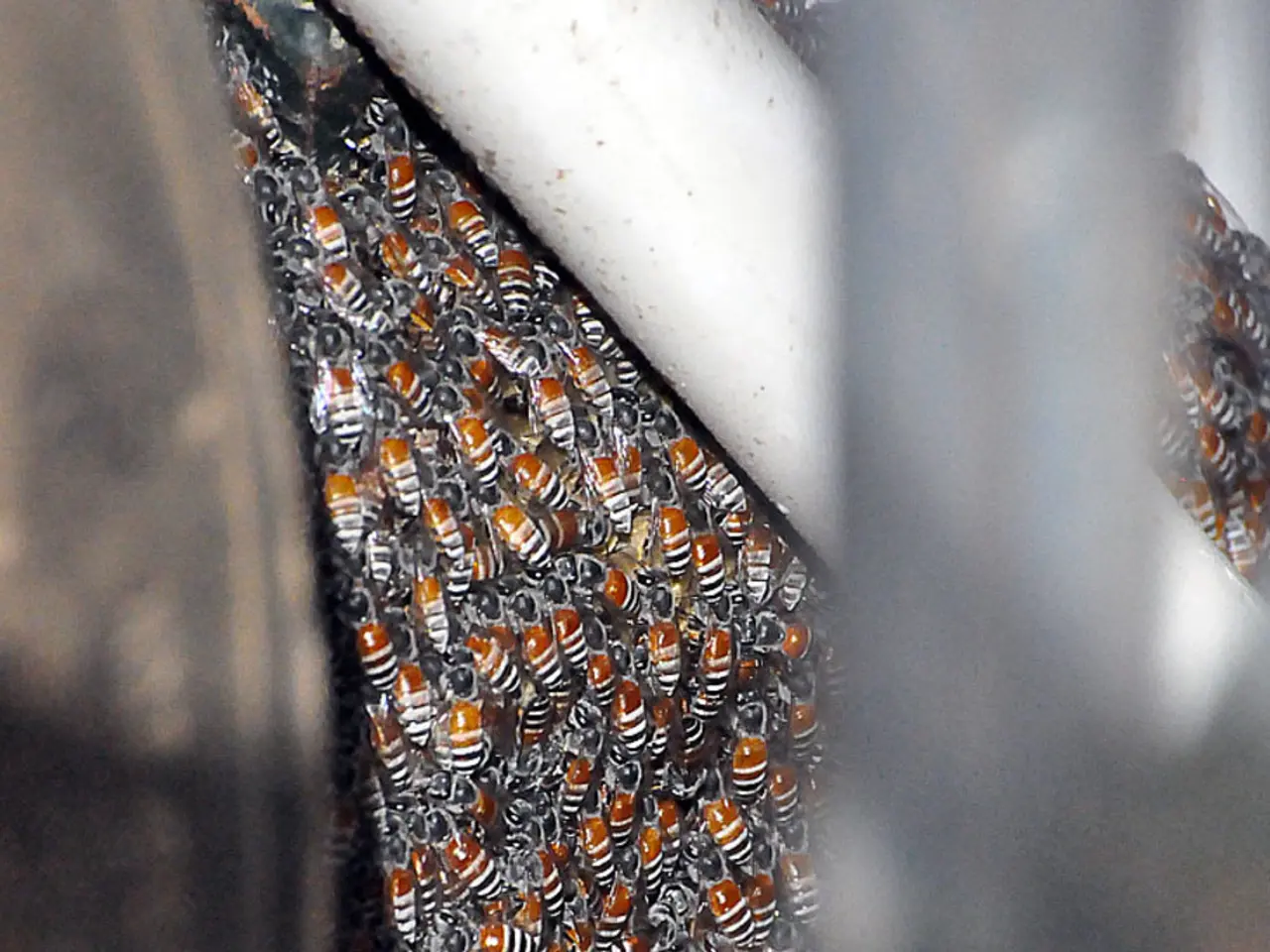Exploring the Depths of Honeybee Sting Treatments for Cosmetic Purposes
The world of skincare is abuzz with the latest findings on bee venom therapy (BVT), a natural treatment showing promise for improving skin health and combating signs of aging. This innovative approach, steeped in ancient traditions like Korean and Ayurvedic practices, is gaining traction due to its potential benefits for skin texture, firmness, and the reduction of fine lines [1].
At the heart of BVT are topical formulations, such as creams, ointments, face masks, and serums, which are reported to harness the power of bee venom to stimulate collagen production, much like a Botox-like effect [1]. The bioactive components in bee venom, particularly melittin, are believed to be responsible for these effects. Melittin, which makes up around 50% of the venom’s dry weight, boasts potent anti-inflammatory, antioxidant, and immunomodulatory properties, all of which contribute to improved skin condition by reducing inflammation and oxidative stress, common factors in skin aging [3].
Early clinical investigations into topical BVT highlight potential improvements in inflammatory skin disorders such as acne, eczema, and psoriasis, suggesting that bee venom may help reduce skin inflammation and enhance skin appearance [3]. Another bioactive enzyme in bee venom, phospholipase A2, interacts with biological membranes and may contribute to the modulation of skin barrier functions and immune responses [4].
However, while bee venom shows promise, safety remains an important concern. Studies indicate that BVT can trigger allergic reactions in some individuals, necessitating careful screening before use [5]. A clinical study proposed the development of venom allergy diagnostic kits to help safely administer bee venom pharmacopuncture (BVP), measuring IgE levels and skin test responses to predict allergic risks [5]. Topical use is generally considered safer than injections, but users should still be cautious of potential skin irritation or hypersensitivity [1].
As more robust clinical evidence is required to definitively confirm the benefits for skin health and anti-aging, ongoing research is focused on refining delivery methods, enhancing safety profiles, and understanding the full scope of bee venom’s therapeutic potential [3].
Bee venom stands out for its natural composition and multifaceted benefits compared to traditional skincare treatments. Serums infused with bee venom offer a more concentrated treatment and are usually lighter in texture than creams [7]. Bee venom masks provide an intensive treatment, making them ideal for occasional use [7]. Numerous scientific studies have demonstrated the potential of bee venom in reducing the signs of aging and treating acne [3].
When selecting bee venom skincare products, look for brands that source their venom ethically and sustainably [9]. Bee venom creams and lotions are popular for their ease of use and suitability for daily skincare routines [7]. Regular use of bee venom-based products can lead to a reduction in the appearance of fine lines and wrinkles, giving the skin a more youthful and rejuvenated look [4].
In summary, bee venom therapy, especially in topical forms, holds promise for improving skin texture, reducing signs of aging, and managing inflammatory skin conditions through its bioactive components like melittin. However, more robust clinical evidence is required, and careful attention to allergic risks is essential for safe use [1][3][5]. With its natural composition and multifaceted benefits, bee venom could revolutionise the skincare industry, offering a more holistic approach to skin health and anti-aging.
- The news about bee venom therapy (BVT) in the realm of scientific discoveries is captivating, as it showcases the potential benefits for health and wellness, particularly skin care.
- In the world of lifestyle and fashion-and-beauty, bee venom is gaining attention due to its role in addressing medical-conditions like acne, eczema, and psoriasis, and its anti-aging effects on skin.
- Amidst the food-and-drink trends, it's worth noting that home-and-garden enthusiasts might also find interest in the developing area of bee venom therapy, as it involves nurturing bees for venom production.
- As research progresses in the science of skin care, the industry of health-and-wellness may undergo revolution, with bee venom dominating discussions on innovative treatments for improved skin health.




